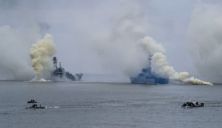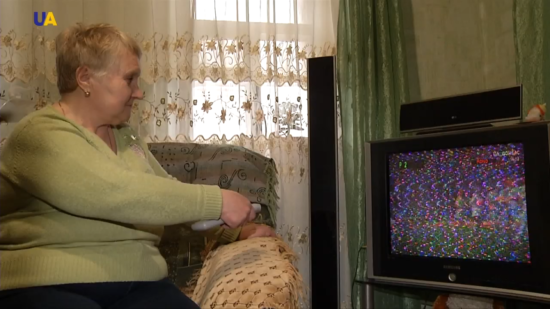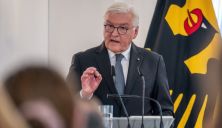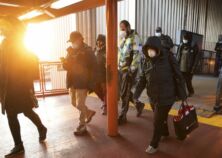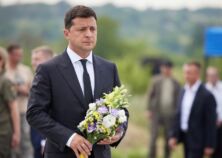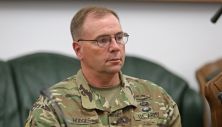20 kilometers away from occupied Luhansk, a local resident is showing us the TV channels picked up by her antenna.
“We watch only UA.Donbas and that’s all. The other TV channels are Russian. These are Russia 1, Life, Russia 24, ORT. We can watch only these channels,” local resident Tetiana Bondarenko says.
The analog signal in her village is weak. That is why her antenna picks up a strong signal from occupied Luhansk. Satellite TV is an alternative. At the “Stanytsia Luhanskaya” exit-entry checkpoint, locals say they use satellite dishes rather actively.
While Ukraine has switched to digital television, one third of Donbas residents continue to use ordinary antennas. Their signals are available mainly along the border with Russia and the occupied territories.
“It is clear that if people have these antennas, then they will use them. If we disconnect Ukrainian TV channels, they will watch Russian ones instead – broadcasting from Donetsk and Luhansk,” National Television and Radio Broadcasting Council of Ukraine official, Serhiy Kostynskyi says.
This is an analog signal from temporarily occupied Donetsk. At one of the military points, Ukrainian soldiers watch Russian TV – which calls them criminals. The soldiers, however, don’t take it personally. But they are still worried about the locals.
“How do you change the minds of these people, who watch this and believe in all these atrocities? We fight to regain our lands. And to achieve this, we must convince people that none of this is true. We understand it, but they don’t. The main thing is how to convey the truth to people,” a soldier says.
After watching a number of anti-Ukrainian broadcasters, we unexpectedly found UATV.
“My name is Olena Voznesenska. I will start by bringing you the news in brief,” a UATV presenter says.
UATV’s signal is better here than the signal of Donetsk TV channels. This means that people living on the other side of the front line can also watch. The National Television and Radio Broadcasting Council of Ukraine says that in the near future UATV will cover a larger territory of Donbas – to counter Russian propaganda.
“We didn’t take anything from anyone – these are our territories. But the Russian military came, grabbed our infrastructure, as well as the television transmitters that belonged to Ukraine’s state or private enterprises – and now use them to broadcast their propaganda. That is why we are forced to build and restore our infrastructure,” Kostynskyi says.
The war has also changed the market. Now, TV and radio broadcasters obtain licenses for broadcasting in Donbas and Crimea under a simplified procedure. In the occupied territories, receiving Ukrainian signal via satellites is the most reliable method. It is much easier for Russia to jam the signal of analogue broadcasting.
